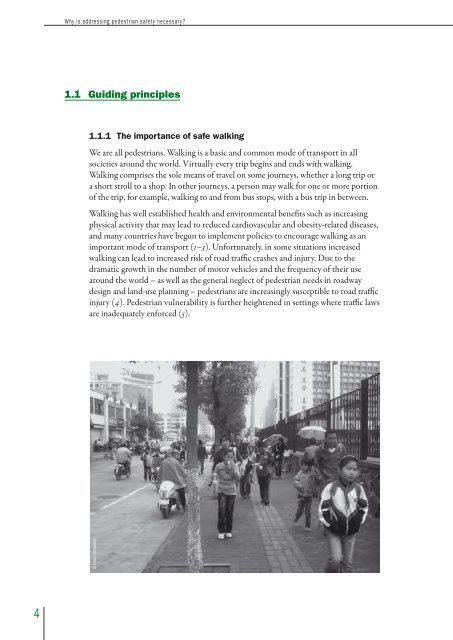Pedestrian safety - Global Road Safety Partnership
Pedestrian safety - Global Road Safety Partnership
Pedestrian safety - Global Road Safety Partnership
Create successful ePaper yourself
Turn your PDF publications into a flip-book with our unique Google optimized e-Paper software.
Why is addressing pedestrian <strong>safety</strong> necessary?<br />
1.1 Guiding principles<br />
1.1.1 The importance of safe walking<br />
We are all pedestrians. Walking is a basic and common mode of transport in all<br />
societies around the world. Virtually every trip begins and ends with walking.<br />
Walking comprises the sole means of travel on some journeys, whether a long trip or<br />
a short stroll to a shop. In other journeys, a person may walk for one or more portion<br />
of the trip, for example, walking to and from bus stops, with a bus trip in between.<br />
Walking has well established health and environmental benefits such as increasing<br />
physical activity that may lead to reduced cardiovascular and obesity-related diseases,<br />
and many countries have begun to implement policies to encourage walking as an<br />
important mode of transport (1–3). Unfortunately, in some situations increased<br />
walking can lead to increased risk of road traffic crashes and injury. Due to the<br />
dramatic growth in the number of motor vehicles and the frequency of their use<br />
around the world – as well as the general neglect of pedestrian needs in roadway<br />
design and land-use planning – pedestrians are increasingly susceptible to road traffic<br />
injury (4). <strong>Pedestrian</strong> vulnerability is further heightened in settings where traffic laws<br />
are inadequately enforced (5).<br />
© David Schwebel<br />
4






